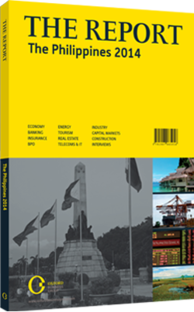All the rest: Creating real growth will require reaching more of the population
Inclusiveness is one of the main priorities of Bangko Sentral ng Pilipinas (BSP). According to a survey published in 2012 by the central bank, eight out of 10 Filipino households have no bank account, and in early 2013 the Philippine National Statistical Coordination Board reported that the poverty rate stood almost unchanged from 2006, at 27.9%. The concern is that the lack of access to banking services among poor and rural communities is holding back a large percentage of the population. As a result, the central bank is working to increase access to financial services via the promotion of microfinance and by encouraging investment in rural financial institutions.
INTO THE FOLD: The main pillar of these efforts is the Strengthening Programme for Rural Banks (SPRB), initiated in 2010 and renewed in 2012. SPRB Module 1 was designed to encourage mergers between rural banks with financial assistance from the Philippine Deposit Insurance Corporation and regulatory relief from the BSP. The programme was initially funded with P5bn ($120.5m) and was to run for two years, with two types of financial assistance offered: the purchase of preferred stock equal or up to 50% of the funds needed to get the bank’s capital adequacy ratio (CAR) to 10% – the other half provided by the acquiring bank – and direct loans for the purchase of government securities. In addition, other incentives were made available, including the restructuring of past due emergency loans from the BSP, a waiver of BSP penalties and a waiver on dividends due to the Land Bank of the Philippines on preferred shares. As of July 31, 2012, 18 applications for the programme had been received.
When SPRB ended on August 2, 2012, SPRB Plus took over and is slated to run until December 31, 2013 (under Memorandum 2012-040). The new programme offers additional incentives. Branch licences in restricted areas are offered to eligible strategic third-party investors (STPIs) in rural banks based on the amount of capital they contribute to raise their CAR above 10%. For each P20m ($482,000), in the case of universal banks, and P15m ($361,500), for thrift banks, a new branch in the restricted area will be allowed – and even if they do not meet the minimum requirement for one branch, they will be able to open one anyway. STPI banks are granted one additional branching licence in restricted areas of Metro Manila as an incentive for their participation in SPRB. Significantly, SPRB Plus encourages non-banks to help in the rehabilitation of rural banks. As of late 2012, 40 banks were involved in SPRB initiatives: 32 were in the SPRB Module 1 and eight were in SPRB Plus. Assistance at that point totalled P525m ($12.6m), with 23 banks having already received funds. The BSP hopes that the SPRB programme will improve the capitalisation of banks, allow them to diversify their portfolios and reduce overall risk.
Apart from SPRB, the BSP partnered with the Philippine Deposit Insurance Corporation and Landbank of the Philippines to launch the Strengthening Programme for Cooperative Banks (SPCB) in November 2011. Both SPRB and the SPCB are designed to encourage mergers and consolidations or acquisitions by eligible STPIs to bring about a stronger and more viable, rural and cooperative banking industry in the Philippines.
FOREIGN INVESTORS: In May 2013 a law was passed allowing non-Filipinos to buy up to 60% of rural banks, and the Justice Department issued a ruling saying the law did not violate the 40% limit on foreign ownership in Filipino companies. The new law amends Republic Act No. 7353, which prohibited foreigners from investing in rural banks. It has not always been that way. Rural banks had been able to sell 40% of their stock to non-local investors from 1952-1981.
Interest is already on the rise. Bridge, a new Singapore-based institution, says it is investing $24m in rural banks in the Philippines. The company has investments from Accion, a non-profit; Bamboo Finance, a private equity firm that specialises in microfinance; and development finance institutions from Europe. The group believes rural banks can grow with the contribution of capital, risk management and planning expertise.
You have reached the limit of premium articles you can view for free.
Choose from the options below to purchase print or digital editions of our Reports. You can also purchase a website subscription giving you unlimited access to all of our Reports online for 12 months.
If you have already purchased this Report or have a website subscription, please login to continue.

